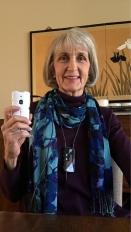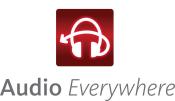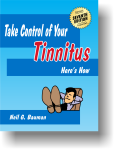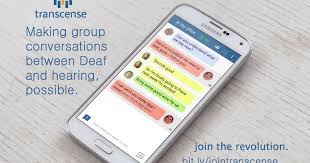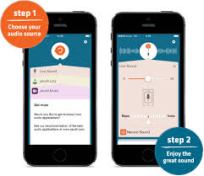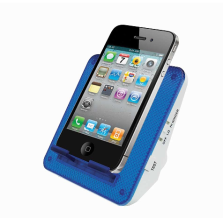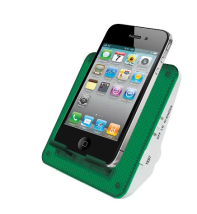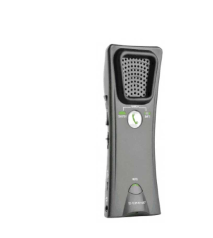In my last blog post, Assisted Listening Devices 101, I gave an overview of Assisted Listening Devices (ALD’s) with a focus on personal amplifiers. A quick review before we move on:
Personal amplifiers are small portable microphones that can help you hear better in many different situations. There are 2 types:
1. Wired – these are attached to you with a wire from the headphone or necklooop. These are best for listening to someone close by.
2. Wireless (FM/Digital) – these have two parts: the transmitter (microphone) and the receiver. The receiver is attached to you with headphones or a neckloop, but the transmitter can be 4 feet away or 150 feet away, near the person speaking. These can be used to listen to someone close by or far away.
Now I would like to go into more detail about the types of personal amplifiers available and how they can be used.
Important Facts about ALD’s
1. Check with your audiologist or hearing aid provider to see what wireless accessories are available from your hearing aid manufacturer. Most hearing aid companies make ALD’s such as Bluetooth phone clips or neckloops, wireless clip-on microphones, TV streamers, and more. I described these in a previous post, “Hearing Aids with Wireless Connectivity.” The advantage of these devices is that they work seamlessly with your hearing aids – you do not need to turn on your t-coil. If you order one, be sure you get a trial period. Some have excellent sound quality and some do not!
2. Other ALD’s that are “generic” and will work with any brand of hearing aid, work best if you have t-coils in your hearing aids. With t-coils you do not need to wear headphones or earbuds, you can wear a neckloop that will send sound into your hearing aids. So, find out if you have t-coils and get them turned on! You can read more about t-coils and neckloops here: “T-coil? What’s a t-coil?” and “What is a Neckloop.”
You can still use a personal amplifier without t-coils, but you may need to remove your hearing aids to use them. The advantage of the generic ALD’s is that they are less expensive than the devices from hearing aid manufacturers and if you change to a different brand of hearing aid in the future, they will still work with them.
3. If you don’t wear hearing aids, you can still use a personal amplifier with headphones or earbuds.
4. ALD’s are not for sissies! ALD’s are for people who have a hearing loss and are brave enough to say, “I have a hearing loss and I am using a device to help me hear.” These devices are mostly visible. No more pretending you hear just fine. No more denial or bluffing! ALD’s are for someone who wants to take control of their hearing challenges and keep actively involved in life!
Why Do I Need a Personal Amplifier?
You may have just spent $3,000 – $6,000 for a pair of hearing aids. Why isn’t that enough?! Hearing aids are great and I strongly recommend getting hearing aids as the first step in treating your hearing loss. But even the best hearing aids will not make your hearing “normal” again. It isn’t like getting glasses which give you normal sight. It can still be a challenge to hear in these situations:
1. Rooms with poor acoustics – sound reverberates off the walls and ceilings.
2. Distance from the speaker – volume and clarity will be reduced with distance.
3. Inability to see the speaker – we all lip read whether we know it or not – it helps to see the speaker’s face.
4. BACKGROUND NOISE – the biggie!
So personal amplifiers will help with all of these situations by getting the microphone closer to the speaker, reducing background noise, and amplifying what you want to hear.
Where Do I Begin?
If you have never used a personal amplifier, I recommend starting with a wired device. My first choice is the “Pocketalker” by Williams Sound. The new Pocketalker 2.0 is small, light, powerful and easy to use. You can read more about it here: Introducing the New Pocketalker 2.0
At $189 it is the most affordable and versatile personal amplifier I own (and I own a lot of them!)
For a wireless device, I recommend the Comfort Contego by Comfort Audio. I previously described the Comfort Contego in “The Pros and Cons of FM Systems.” One of the FM systems I reviewed, the Motiva PFM 360 by Williams Sound, has been discontinued, so I have recently been trying out the Comfort Contego and am very happy with it. It is small and has a microphone in both the receiver and the transmitter, so you can choose to listen to the person with the transmitter, or to people close by, or both. If you will only be listening to someone close by, you can use the receiver by itself, just like a wired device. When the speaker is farther away, you can hang the transmitter around the speaker’s neck or put it on the speaker’s podium. There is an excellent 6 minute video simulation that demonstrates listening with and without an FM system in “The Magic of Personal FM Systems.” Be sure to watch the entire video as it is in the 2nd half that he demonstrates what his voice sounds like when using an FM system.
There is an excellent 6 minute video simulation that demonstrates listening with and without an FM system in “The Magic of Personal FM Systems.” Be sure to watch the entire video as it is in the 2nd half that he demonstrates what his voice sounds like when using an FM system.
Where Can Personal Amplifiers Help Me?
RESTAURANTS – Let’s start with noisy restaurants. This is the MOST difficult situation for people who are hard of hearing. I have a great solution when talking with one other person at a restaurant. I wrote about it here, “Noisy Restaurant – Recipe for Success!” and it is still my favorite set-up – using the Pocketalker and a lapel microphone. It is very effective and makes dining out so much more enjoyable. You could also use the Comfort Contego with your partner wearing the transmitter around his/her neck.
Unfortunately, I have not found a good solution for easily communicating with 3 or 4 people around a table at a noisy restaurant. All the ALD’s I’ve tried pick up too much background noise. If I ever find such a device, I will let you know!
MEETINGS, CLASSES, and LECTURES – Wireless devices are best in meetings, classes, and lectures because they can be worn by the speaker or placed on a conference table to pick up voices around the table. Many hearing aid companies have developed a wireless microphone that will send the sound directly into your hearing aids. This is the BEST – but be sure to try it out. Some have excellent sound quality and others are distorted and/or have a tinny sound. The Pocketalker is also very helpful at meetings. I often use this and try to sit near the front of the room. It works very well in a quiet room. If several people are talking at once, it won’t work as well. Book Club meetings can be particularly challenging. Try to get 10 women to talk one at a time!
GAMES – I recommend the Pocketalker for games such as bridge, Mahjong, etc. You can just lay it on the table next to you and it will help hearing bids in bridge, discards in Mahjong, and the conversation. You could also use a wireless device, just place the transmitter on the table and clip the receiver to your belt or put it in your pocket.

IN THE CAR – Hearing in the car is so difficult! You have the wind, the engine noise, and the inability to see the person’s face. Both a wireless device and the Pocketalker are great for this. With the Pocketalker, just clip the lapel microphone on the person’s collar and you will hear great. If you are in the back seat, clip it to one of the front seats to hear what’s going on. You can do the same with a wireless system in the car – with no wires hanging between you.

TELEVISION – There are many good TV Listening Systems, but a personal amplifier may also be used to listen to TV. I prefer the wireless devices as you can simply place the transmitter near the TV speaker as you listen with the receiver. A Pocketalker can also be used. It comes with a 12 foot extension cord and Velcro clips so you can plug the external microphone into the extension cord and place it or clip near the TV.
There are many other excellent personal amplifiers. I have just used the Pocketalker and Comfort Contego as examples to illustrate how ALD’s can can be used (and because I’ve found these two devices to provide excellent sound quality). The choices can be overwhelming, so feel free to contact me for help finding the best device to fit your needs. I can be reached by email at marilyn@heargear.net
Do you have a favorite ALD? What has helped you hear better in challenging situations? I would love to hear from you! Please leave a comment.
Filed under: Uncategorized | Leave a comment »
